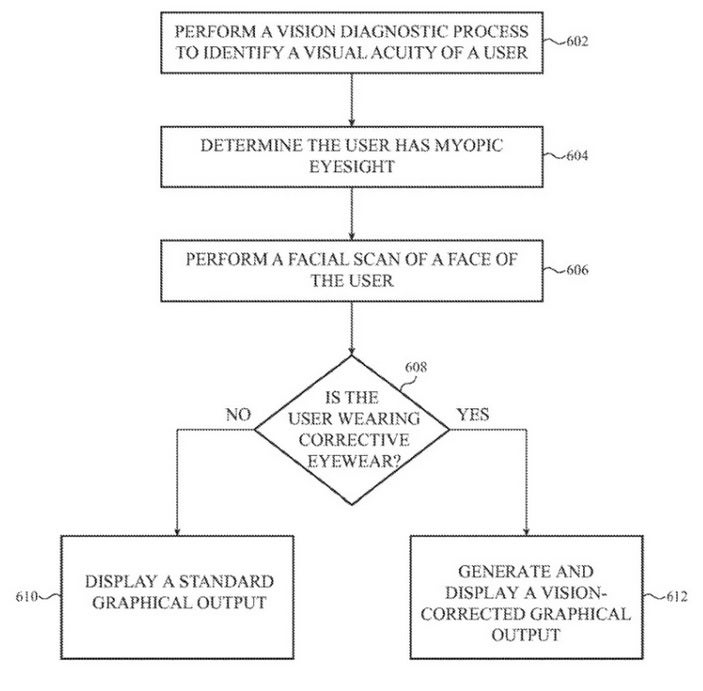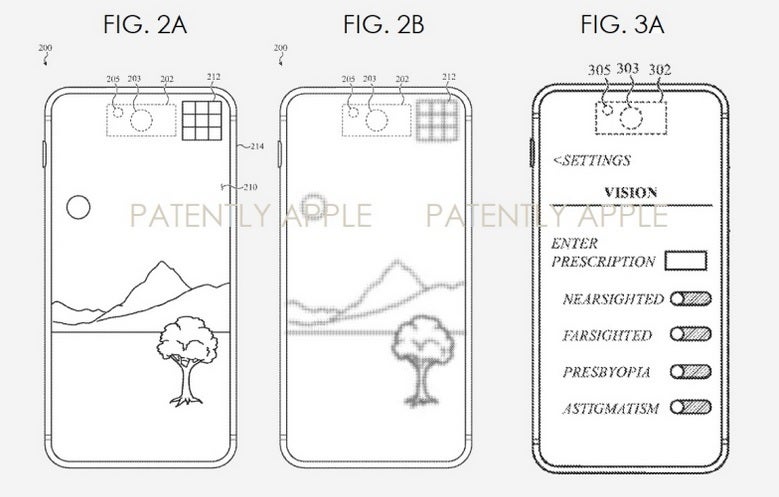Patent filing shows that Apple is working on a display that adjusts to correct user's vision

Patently Apple discovered a patent application that Apple filed with the U.S. Patent and Trademark Office (USPTO) that would allow the company to display vision-corrected graphical outputs on an electronic device. The application also describes something called "Privacy Eyewear" that would allow only the owner of such glasses to read the content on a display. Nosy people around the screen would not be able to sneak a peek at the content.
Apple files a patent application for a display that can correct a user's vision
The patent points out that a large percentage of humans need to use prescription glasses or contact lenses in order to see properly. The technology mentioned by Apple in the patent would allow an iPhone or iPad Pro screen to automatically correct the vision of the user.

How the patent works to decide whether or not to adjust the display to correct a user's vision
For example, if a user is nearsighted but not wearing glasses, the standard graphical output would be shown on the screen since no correction would be needed for the user to see the screen clearly. If the nearsighted user is wearing glasses, the screen can adjust so that the person using the device won't have to take off his glasses in order to see clearly.
The patent application mentions scanning all or part of a device user's face and generating a depth map that would have to be matched to unlock the device. This essentially is how Face ID works. The scan not only would authenticate the person getting scanned as the registered user of the device, it also could determine how to correct the user's eyesight using the depth map.

Illustration from the patent shows how a user can enter his information instead of using Face ID to identify the corrective eyewear needed
The device would store the results of the scan so that if the same user was discovered by Face ID trying to unlock the device at a future time, the screen would automatically be corrected. Instead of the scan, the user could input the issues with his eyes.
One illustration in the application shows a settings box that would allow the user to type in his prescription and use a toggle to reveal what vision deficiencies a user has (nearsighted, farsighted, presbyopia, astigmatism) so that the display can make the proper adjustments. Another possibility is that the user could take a vision test that would be pre-installed on the phone.
In the patent, Apple says, "The method may further comprise selecting a display profile that is connected with the corrective eyewear scenario and the registered user and generating a graphical output in accordance with the selected display profile. The corrective eyewear scenario may correspond to the registered user wearing a corrected eyewear. The graphical output may compensate for a vision deficiency associated with the corrective eyewear scenario and the registered user."
One pair of glasses could be considered privacy eyewear and when scanned by Face ID, the screen could be viewed only by the user
In other words, the iPhone could recognize whether the user is wearing his corrective lenses. If the user takes his glasses off, the screen could change. As a result, regardless of whether the user is wearing his corrective lenses or not, the image on the display would appear to be clear to him.
The patent says that an iPhone or iPad Pro user could have four different appearances all for the same identity. This would include three looks with glasses (reading glasses, prescription glasses, and sunglasses) and one look with no glasses.
Now, how about that privacy eyewear that would keep nosy bystanders from peeking at your phone or tablet's display? So let's say that you are using Face ID to read a particular pair of glasses to adjust the screen on your device. When Face ID reads this pair of glasses, the screen adjusts allowing the user to read it clearly while everyone else surrounding the display would not be able to read it.
The name of the patent application is "Systems and Methods for Switching Vision Correction Graphical Outputs on a Display of an Electronic Device" and was originally filed on May 6, 2020. Three inventors are named as the ones that came up with the idea: Lee; Sung Chang; (Saratoga, CA); Ryu; Kee Suk; (Cupertino, CA); Wu; and Wei Guang; (Palo Alto, CA).
Follow us on Google News



![Some T-Mobile users might be paying more starting in March [UPDATED]](https://m-cdn.phonearena.com/images/article/176781-wide-two_350/Some-T-Mobile-users-might-be-paying-more-starting-in-March-UPDATED.webp)










Things that are NOT allowed:
To help keep our community safe and free from spam, we apply temporary limits to newly created accounts: